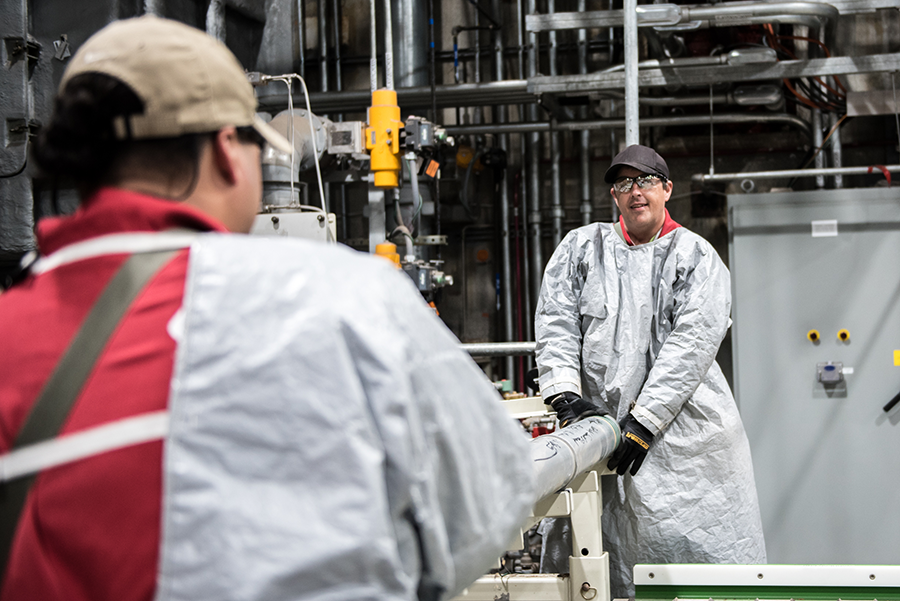U.S. Completes Landmark CWC Destruction
September 2023
By Mina Rozei
After decades of effort, the United States completed the destruction of its vast chemical weapons arsenal and marked the final step in eliminating the world’s known chemical weapons stockpiles.
 Apart from the four countries that remain nonsignatories to the Chemical Weapons Convention (CWC)—Egypt, Israel, North Korea, and South Sudan—every nation in the world is now free of its verified chemical weapons arsenals.
Apart from the four countries that remain nonsignatories to the Chemical Weapons Convention (CWC)—Egypt, Israel, North Korea, and South Sudan—every nation in the world is now free of its verified chemical weapons arsenals.
Russia and Syria have been accused by the Organisation for the Prohibition of Chemical Weapons (OPCW), which oversees the CWC, and many countries for holding secret stocks and using them against adversaries in recent years.
The CWC prohibits the development, production, acquisition, stockpiling, and retention of chemical weapons.
The main goal of the convention, ratified in 1997, is the verification and destruction of all known chemical weapons stockpiles. The United States declared that it possessed nearly 30,000 metric tons of chemical weapons. Russia declared that it had roughly 40,000 metric tons of chemical weapons in its stockpile, the world’s largest.
When the United States ratified the convention in 1997, it was given 10 years to completely and verifiably destroy its chemical weapons arsenal at its nine military sites. After the United States received two five-year extensions from the OPCW, the final destruction deadline was set for Sept. 30, 2023, for the two remaining sites, at Blue Grass, Kentucky, and Pueblo, Colorado. Although there were doubts about whether this date could be met, the process was completed in July, more than two months early.
U.S. officials worried that adversaries such as Iran, Syria, and Russia would point to the delays as evidence of hypocrisy and undermine the U.S. commitment to eliminating chemical weapons. According to Craig Williams, head of the Kentucky Citizens Advisory Commission at the Blue Grass facility, meeting safety and environmental standards was crucial to the process. “The primary challenge was convincing the military to abandon their selected technology, incineration (with no public input), and implementing an acceptable alternative, neutralization,” he said.
The destruction of all known chemical weapons stockpiles was a turning point in arms control more broadly, not just for the CWC regime. But other serious issues remain. Although Russia is a CWC state-party, questions have been raised about its treaty compliance. Russia’s use of chemical weapons in assassinations and its alliance with the Syrian regime highlight cracks in CWC implementation.
OPCW investigative teams determined that Syria used chemical weapons on multiple occasions between 2013 and 2018 in the Syrian civil war and that Islamic State forces also used them. In addition, four countries still have not joined the treaty.
Meanwhile, new challenges face the Blue Grass and Pueblo facilities and the people who work there. According to Irene Kornelly, head of the Citizens Advisory Commission at the Pueblo site, “The closure of the chemical destruction facility is the biggest issue facing the Pueblo community. The goal is to make this property a viable part of the Pueblo community with jobs and a vibrant economy.”
These accomplishments and challenges will be on the agenda when the 28th conference of CWC states-parties convenes in The Hague on Nov. 27-Dec. 1.
